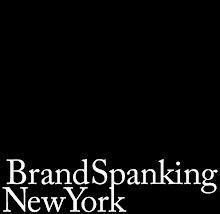Recently I watched an insightful documentary on the science of drug dependency, which focused primarily on the human brain and its chemical responses to narcotics.
Without delving into the whole discussion of neurotransmitters, dopamine, endorphins, stimulation, and myriad other physiological effects of drugs on nerve cells, it all boiled down (for me, anyway) to one succinct portion of the script:
The brain's GO response only needs a millisecond to render a CHASE mentality. For the drug-dependent, the slightly slower STOP response never gets a chance to activate. Once it’s initiated, this GO response — the “need” state that’s at the very heart of addiction — flies right under the OVERRIDE radar, making the STOP response way too slow to bring about its intended effect.
This process is reinforced by the repeated exposure to that stimulus, after which point the brain begins to exhibit conditioned behavior on top of its heightened physiologic, or neurochemical, stimulation.
In English: If it makes you feel good enough, the STOP chemicals in your brain can’t chase down the more athletic GO chemicals. Do the drug enough and whammo, you’re addicted.
The operative phrase here is “if it makes you feel good enough.” We see all the time what happens when something feels so good to someone that he or she will GO and act irrationally before they have a chance to think and perhaps STOP themselves. Many times it makes no sense, as in the case of the wealthy Houston ex-model who shoplifted her way out of the social scene because she couldn’t “put the brakes on.” She was rich, but she couldn’t help but steal sweaters she could easily afford. It just felt too damned good.
This is where the word “compulsive” comes from, literally, “driven by an irresistible inner force to do something.” Compulsive gambling, shopping, shoplifting, lying, fornicating, skydiving, streaking, eating — you name it. There are some really bizarre addictions out there too, but I’d rather keep this place professional.
Anyway, all of those dependencies have something important in common, both with each other and with the idea of brand. None of those objects or actions are considered "drugs" per se, because the chemicals they abuse are the ones inside all our brains. We don't need to score a bag of cocaine. Rather we're getting high off the “repeated, hedonic response that elicits a GO reaction” by the brain. And that, friends, is an addiction.
I think we’d all agree that garnering this “need” response in our consumers is the ultimate fulfillment of our jobs. But if that’s the truth, I guess it makes me feel sinister — and that it’s no real surprise that people are instinctively resistant to marketing, showing a kind of a deep-seated fear that they’re being remote-controlled by corporate messengers.
As Kevin Roberts, Worldwide CEO of Saatchi & Saatchi, was quoted last year in a BBC Magazine article titled Bonfire of the Brands:
“For great brands to survive, they must create loyalty beyond reason. The secret is the use of mystery, sensuality and intimacy... the power to create long term emotional connections with consumers."
“Loyalty beyond reason,” eh? That first sentence could be pulled straight out of the drug addiction documentary.
Something else explored in this movie is the idea of a “rebound,” or the process of neural activity dropping below its baseline (normal chemical levels) before returning to its original levels, a.k.a., “jonesing.” The drug is the cause of the elation and the depression, but by the time users find this pain unbearable, it's too late. They need more and more to stave off the inevitable pain of the rebound. They're addicted.
In the above-mentioned BBC Magazine article, the author writes:
“I now realise that it's these damn brands that are the source of the pain. For every new status symbol I acquire, for every new extension to my identity that I buy, I lose a piece of myself to the brands. I placed my trust, even some love with these companies, and what have I had in return for my loyalty and my faith? Absolutely nothing. How could they, they're just brands.”
Sounds familiar. You could replace the word “brands” with “blow” or “meth” or “horse” or whatever you want. It’s all the same brain.
As marketers, it’s that very consumer “need” response we’re pursuing — and I guess, to be fair, it seems that finding, purifying, and strengthening this “drug” to give to our audiences has, in effect, become our own addiction.
Thursday, April 26, 2007
Subscribe to:
Posts (Atom)

